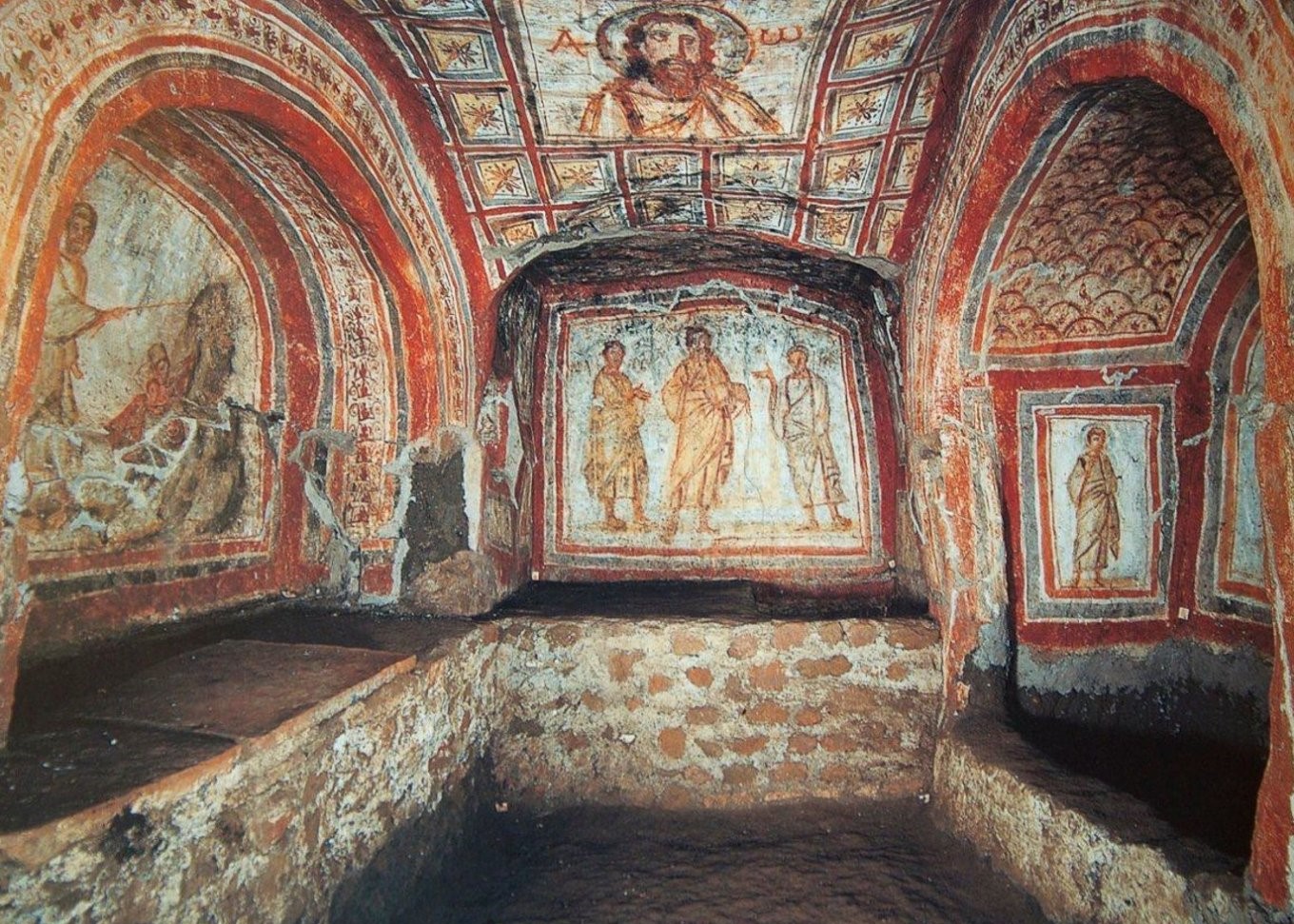
Among the millions of visitors to the center of Christianity, there is certainly no dearth of those that make their way to the Eternal City's Catacombs, the final resting places of the first followers of Christ. The most-preferred and most-visited itinerary of the hypogeums are those of San Callisto.
The Catacombs of San Callisto are located in Rome, amidst the splendid and bucolic scenery of the Appia Antica (Ancient Appian Way). Built sometime between 250 and 300 A.D., the Catacombs of San Callisto (St. Callixtus) hold the graves of 500,000 Christians, including dozens of martyrs and 16 pontiffs.
These galleries occupy a total of 15 hectares and count almost 20 km (12.4 mi) of underground passageways 20 m (66 ft) deep. At times, they branch out into five levels, lined with dug-out niches two or three rows high.
In the 1st Century A.D. several poor Roman families (both Christian and Pagan) began to bury their dead in these caves of lava rock on the Appia Antica.
At the end of the 2nd Century, the Emperor Commodus, tolerant of the Christians and influenced by the requests of his Christian lover Marcia, freed members of the Church who had been condemned to forced labor in the mines. Among these Christians was Callisto (Callixtus), a slave accused of both fraud and fighting inside a synagogue. In 199, Pope Zeffirino, finding Callisto to be a man of great talent, named him deacon and guardian of the Roman Church.
In the 3rd Century, he became Pope and was then proclaimed saint upon his death (although his martyrhood is not officially documented). Callisto had claimed title to the cemetery now named for him, though he is not one of the Popes buried there today.
In successive years, Pope Damasus I was able to convince the Emperor Teodosio to recognize Christianity as the State religion. Damasus then decided to restore these Catacombs to demonstrate that the glory of Rome was Christian and not, after all, pagan.
In the upper levels of the complex (above-ground), two small basilicas are visible. They each contain three apses (“Tricore”). It is in the eastern part where S. Zeffirino and the young martyr of the Eucharist, S. Tarcisius were most likely buried.
The Papal Crypt is the most important area here. Referred to as “the Little Vatican,” it preserves the remains of at least five Popes martyred and beatified between 230 and 283.
Also highly-interesting is the Crypt of Santa Cecilia, another very famous martyr who was venerated here for at least five centuries. She was buried where today we can see the astounding sculptural masterpiece of Stefano Maderno, who created it right after the discovery of the sarcophagus containing the holy martyr. In the year 821, the relics of S. Cecilia were transferred to the Basilica dedicated to her in Trastevere.
The Crypt was decorated entirely in frescoes and mosaics – one of the frescoes, right next to the statue of the Saint, depicts Cecilia praying – and on the wall of the skylight one can admire the depiction of three martyrs: Saints Policamus, Sebastiano and Quirinus.
At the end of the Crypt visit, we cross through a prominent gallery full of burial niches, and arrive in a chamber with five rooms called “the Cubicles of the Sacraments:” familial tombs painted with frescoes dating to the beginning of the 3rd Century A.D. Here, the sacraments of the Baptism and the Eucharist are represented symbolically; one of these symbols is the prophet Jonah, representing the Resurrection.
Saint Cecilia
From a Roman noble family, Cecilia converted her husband Valerian to Christianity. Having refused to offer sacrifices to idols, he was martyred while Cecilia was condemned to death by suffocation in the vapor baths of her own home in Trastevere. She was able to survive for several days, a period in which she continually sang hymns: thus the motive for which she became the patron saint of music. She was then decapitated (after three faulty attempts). It is said that she continued to enact conversions up until her last moment of death.



